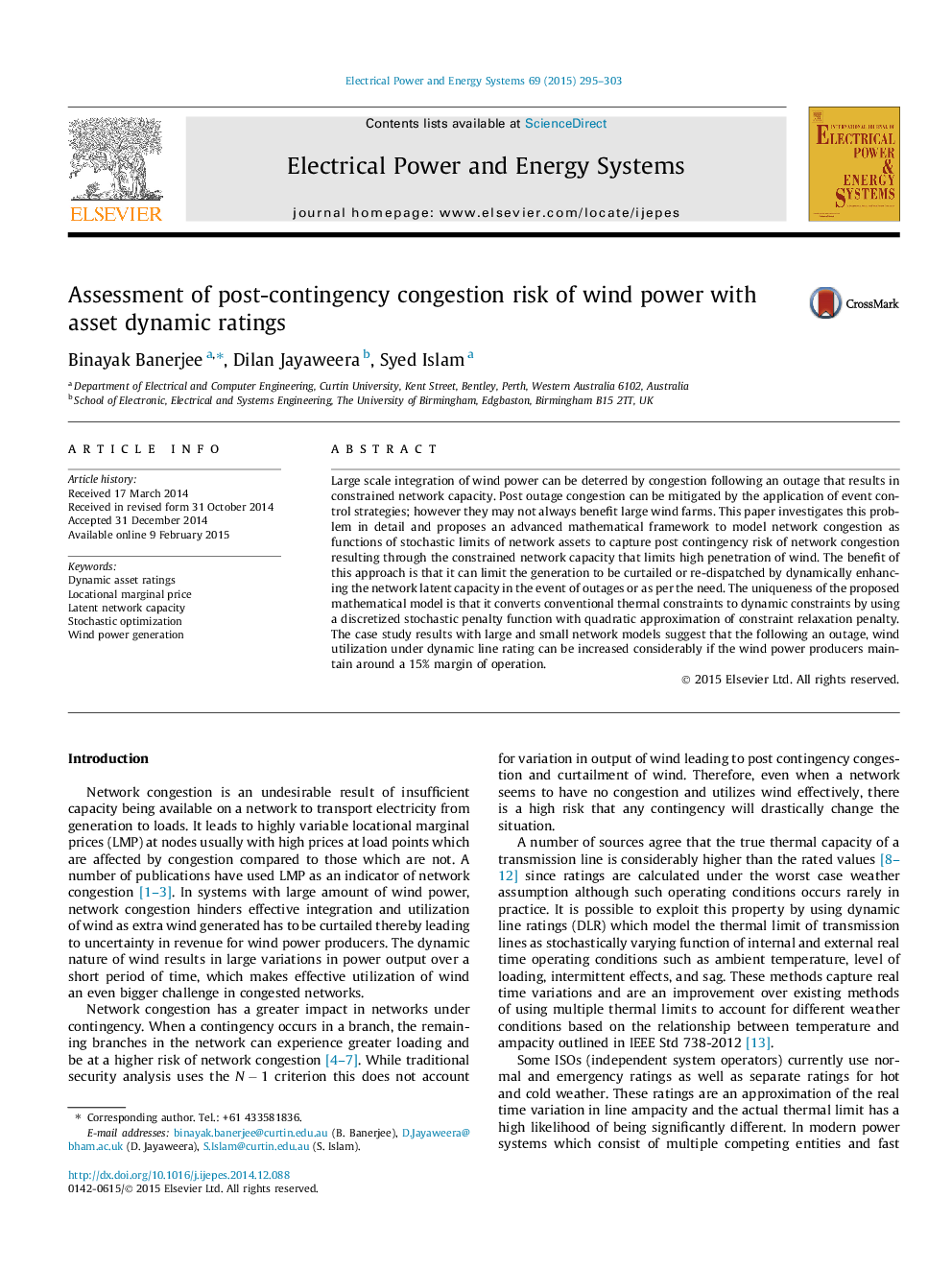| Article ID | Journal | Published Year | Pages | File Type |
|---|---|---|---|---|
| 399536 | International Journal of Electrical Power & Energy Systems | 2015 | 9 Pages |
•We capture post contingency spare network capacity to limit wind curtailment.•We temporarily relax thermal constraints to release latent network capacity.•We limit network congestion and wind curtailment for N − 1 and N − 2 contingencies.•Dynamic line rating releases the equivalent of 20–50% extra network capacity.•Dynamic ratings can improve post contingency market share of wind power producers.
Large scale integration of wind power can be deterred by congestion following an outage that results in constrained network capacity. Post outage congestion can be mitigated by the application of event control strategies; however they may not always benefit large wind farms. This paper investigates this problem in detail and proposes an advanced mathematical framework to model network congestion as functions of stochastic limits of network assets to capture post contingency risk of network congestion resulting through the constrained network capacity that limits high penetration of wind. The benefit of this approach is that it can limit the generation to be curtailed or re-dispatched by dynamically enhancing the network latent capacity in the event of outages or as per the need. The uniqueness of the proposed mathematical model is that it converts conventional thermal constraints to dynamic constraints by using a discretized stochastic penalty function with quadratic approximation of constraint relaxation penalty. The case study results with large and small network models suggest that the following an outage, wind utilization under dynamic line rating can be increased considerably if the wind power producers maintain around a 15% margin of operation.
